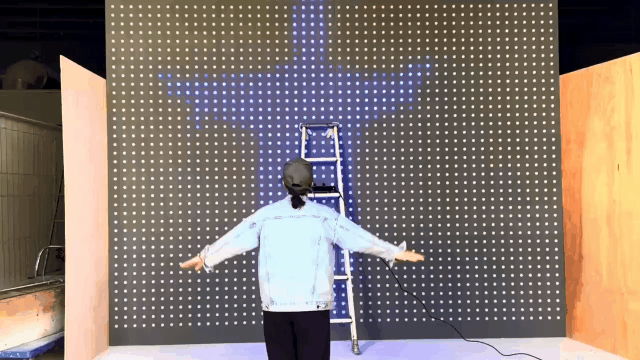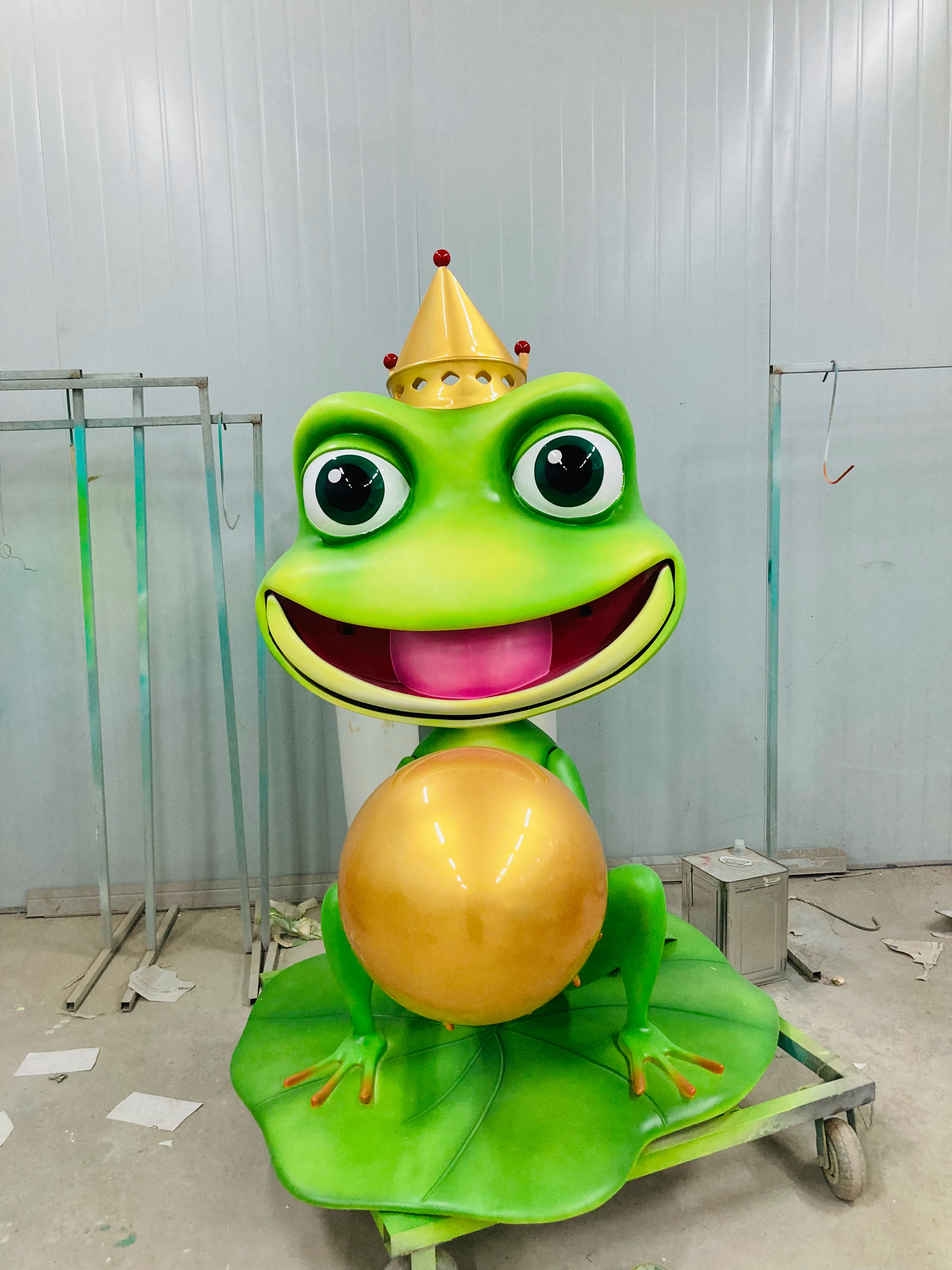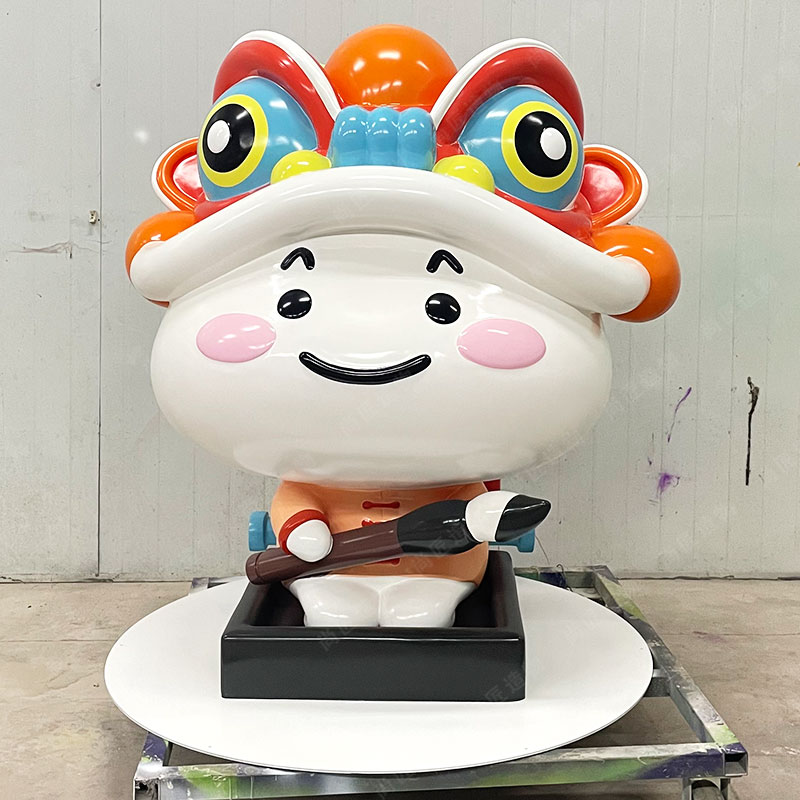Key Takeaways
Creating durable IP character sculptures requires strategic material selection combined with advanced protective measures. Stainless steel and aluminum alloys dominate rust-resistant art due to their innate corrosion resistance, but supplemental treatments ensure longevity in harsh environments. Weatherproofing methods like powder coating or galvanization form impermeable barriers, while clear acrylic sealants preserve metallic finishes without obscuring details.
| Material | Best Use Case | Maintenance Interval |
|---|---|---|
| Stainless Steel | High-traffic public spaces | Biannual inspection |
| Aluminum Alloy | Coastal/ humid environments | Annual cleaning |
Designers combat corrosion through strategic drainage channels in sculptural bases and minimized moisture-trapping crevices. For intricate features like facial expressions or Realistic sculpture textures, laser-cut metal sheets paired with TIG welding maintain precision better than casting methods. Regular maintenance protocols—including pH-neutral cleansers and touch-up coatings—extend structural integrity without compromising artistic intent. Understanding regional climate patterns further informs material thickness specifications and joint-sealing requirements.

Weatherproof Treatments for Metal Statues
Effective weatherproofing ensures metal sculptures retain structural integrity and visual appeal in outdoor environments. For rust-resistant metals like stainless steel and aluminum alloys, treatments begin with surface preparation—removing contaminants through sandblasting or chemical cleaning. Powder coating is widely used for its durability, providing a thick, even layer resistant to UV rays and moisture. Galvanization, which involves applying a zinc layer, offers sacrificial protection for steel-based artworks, slowing corrosion even if the coating is scratched.
"Combining multiple protective layers—such as epoxy primers with polyurethane topcoats—creates a synergistic defense system against environmental stressors," notes Dr. Elena Marquez, a materials conservation specialist.
Clear acrylic sealants preserve metallic finishes while allowing intricate details to remain visible, ideal for IP character sculptures requiring precise facial features or textured costumes. For aluminum alloys, anodization enhances natural corrosion resistance by thickening the oxide layer, which can be dyed to match artistic requirements. Regular maintenance, including annual inspections for coating chips or oxidation spots, prevents minor damage from escalating.
While stainless steel inherently resists rust due to chromium content, coastal installations benefit from additional passivation treatments to neutralize saltwater effects. For projects requiring lightweight alternatives, fiberglass sculpture techniques may complement metal frameworks, though metal-specific treatments remain critical for longevity. Avoid wax-based products in high-heat areas, as they can soften and trap debris.
Protective Coatings for Metal Sculptures
Effective protective coatings serve as the first line of defense against corrosion in outdoor metal sculptures, particularly for intricate IP character designs. Epoxy primers form a durable base layer, bonding tightly to metals like stainless steel or aluminum alloys while filling microscopic surface imperfections. For long-term weather resistance, polyurethane topcoats are widely favored—their UV-stable formulas prevent color fading and maintain visual clarity under harsh sunlight.
Innovative ceramic-based coatings have also gained traction, offering exceptional heat resistance and hardness comparable to automotive finishes. These advanced layers shield delicate sculptural details—such as facial expressions or costume textures—from acidic rain and salt spray. Application techniques matter equally: electrostatic spraying ensures uniform coverage on complex geometries, while brush-applied wax coatings provide touch-up flexibility for high-traffic public installations.
To balance aesthetics and protection, translucent acrylic sealants are often layered over metallic finishes, preserving luster without compromising durability. Regular maintenance checks—focusing on coating cracks or chips—extend the lifespan of these barriers, ensuring IP sculptures remain vibrant and structurally sound for decades.

Designing Rust-Resistant IP Characters
Effective rust-resistant design for IP character sculptures begins with strategic material selection and structural planning. Metals like 316-grade stainless steel and marine-grade aluminum alloys offer inherent corrosion resistance due to their chromium or magnesium-silicon compositions. Designers often incorporate sloped surfaces and rounded edges to prevent water pooling, a critical factor in minimizing oxidation risks. For intricate features such as facial expressions or logo embossing, laser-cut ventilation channels can be integrated to promote airflow without compromising visual fidelity.
Advanced fabrication techniques like TIG welding ensure seamless joints, eliminating crevices where moisture might accumulate. When developing IP character sculpture designs for outdoor use, engineers often combine galvanized steel frameworks with aluminum cladding to balance structural integrity and corrosion resistance. Post-processing steps, including electrophoresis coating or thermal-sprayed zinc layers, provide additional barriers against environmental exposure. These methods allow artists to maintain fine details—from textured costumes to delicate accessories—while meeting durability requirements for multi-year outdoor installations.

Stainless Steel in Sculpture Longevity
Stainless steel’s exceptional corrosion resistance makes it a cornerstone material for outdoor IP character sculptures requiring decades of structural integrity. The alloy’s chromium content (minimum 10.5%) enables self-repairing oxide layer formation when exposed to oxygen, effectively shielding intricate facial features and costume details from atmospheric moisture. For coastal installations, marine-grade 316 stainless steel proves particularly resilient, its molybdenum additives combating salt spray corrosion that compromises lesser alloys.
Modern sculptors employ argon-based TIG welding to preserve the metal’s crystalline structure during assembly, preventing weak points where rust could initiate. Post-fabrication passivation treatments further enhance durability by dissolving surface iron particles through citric or nitric acid baths. When designing character joints or overlapping armor elements, technicians strategically angle components to prevent water pooling—a critical consideration for Cartoon sculpture installations in rainy climates. Recent advances in laser-texturing now allow weathering-resistant surface patterns that mimic fabric textures without compromising the protective oxide layer, bridging aesthetic requirements with material science constraints.

Aluminum Alloys in Rust-Resistant Art
Aluminum alloys have become indispensable in modern rust-resistant sculpture design, particularly for IP character artworks requiring both durability and intricate detailing. Unlike iron-based metals, aluminum naturally forms a protective oxide layer when exposed to oxygen, effectively preventing rust without additional coatings. This inherent corrosion resistance makes alloys like 6061 and 3003 ideal for outdoor installations in coastal or humid environments, where moisture accelerates metal degradation.
Artists leverage aluminum’s lightweight properties to create dynamic poses for characters without compromising structural integrity—a critical advantage for large-scale installations. The material’s malleability allows precise replication of facial expressions, costume textures, and brand-specific features, ensuring IP characters retain their recognizable traits over decades. For enhanced longevity, anodizing treatments can be applied to amplify the oxide layer’s thickness while introducing vibrant color finishes, as seen in kinetic sculpture designs that combine motion with weather resistance.
Recent advancements include aluminum-magnesium-silicon alloys, which improve weldability for complex assemblies—enabling multi-part sculptures like sprawling fantasy creatures or interconnected character groups. When paired with powder-coated accents on stainless steel joints, these alloys offer a balanced solution for preserving artistic intent while meeting industrial-grade durability standards.
Detailing Techniques for Metal Statues
Effective detailing in rust-resistant metal statues requires balancing artistic precision with material durability. Artists working with stainless steel or aluminum alloys often use laser cutting and CNC milling to achieve crisp lines and intricate patterns. These methods preserve design integrity while minimizing stress points that could trap moisture. For textured surfaces, techniques like acid etching or sandblasting add depth without compromising corrosion resistance.
When incorporating fine features—such as facial expressions or costume elements—stamping and forging methods allow controlled shaping of weather-resistant metals. Protective coatings like clear ceramic sealants or UV-resistant powder coatings can be applied in thin, even layers to safeguard details without obscuring them. Strategically placed drainage channels in the design prevent water accumulation in recessed areas, reducing long-term wear. This approach ensures both visual complexity and structural resilience in outdoor environments.
Maintaining Outdoor Metal Sculptures
While rust-resistant metals like stainless steel and aluminum alloys significantly reduce corrosion risks, proactive maintenance remains critical for preserving outdoor sculptures. Regular cleaning forms the foundation of care—a simple routine of wiping surfaces with mild detergent and water every 4–6 weeks prevents dirt accumulation, which can trap moisture and accelerate wear. For intricate IP character designs, use soft-bristle brushes to reach crevices without scratching protective coatings.
Inspections should coincide with seasonal changes. Check joints, welded areas, and decorative elements for early signs of pitting or discoloration, addressing issues before they compromise structural integrity. Reapply UV-resistant sealants or powder coatings every 2–3 years, focusing on high-exposure zones such as upward-facing surfaces. In coastal or high-humidity regions, consider annual touch-ups using corrosion-inhibiting primers.
Environmental adjustments also play a role. Position sculptures away from sprinkler systems or dense foliage to minimize prolonged water contact. During winter, remove ice buildup gently with plastic tools to avoid abrasive damage. By combining material science with disciplined upkeep, artists ensure that IP character sculptures withstand both weather and time while retaining their narrative impact.
Combating Corrosion in IP Sculptures
Effective corrosion prevention in IP character sculptures begins with strategic material selection and proactive maintenance. Metals like 316-grade stainless steel offer superior resistance due to their chromium content, which forms an invisible protective oxide layer. For aluminum alloys, anodizing creates a durable surface barrier against moisture and pollutants. However, even rust-resistant materials benefit from supplementary coatings—powder coating adds color while sealing microscopic pores, and ceramic-based clear coats preserve metallic finishes without obscuring intricate facial features or costume details.
Environmental factors significantly influence corrosion risks. Sculptures near coastal areas require more frequent inspections for salt deposits, while urban installations may accumulate corrosive industrial particles. A tailored maintenance schedule should include gentle cleaning with pH-neutral solutions and prompt repair of surface scratches that expose raw metal. Advanced monitoring systems, such as wireless corrosion sensors embedded in structural joints, enable early detection of moisture penetration. By combining resilient materials with adaptive care protocols, artists ensure that IP characters retain their visual impact and structural integrity across decades of outdoor exposure.
Conclusion
The creation of durable IP character sculptures relies on harmonizing material science with artistic precision. By selecting rust-resistant metals like stainless steel and aluminum alloys, artists and designers establish a strong foundation for longevity. These materials inherently resist environmental stressors while accommodating intricate detailing through advanced fabrication techniques. Pairing these metals with protective coatings—such as powder coatings or galvanization—adds an extra layer of defense against moisture and pollutants.
Equally critical are design strategies that minimize water retention in crevices and joints, preventing corrosion hotspots. Regular maintenance, including inspections and targeted cleaning, ensures sculptures retain their aesthetic appeal over decades. While technical solutions dominate the conversation, the artistic vision remains central; balancing structural resilience with creative expression requires careful planning at every stage.
As outdoor art installations grow in popularity, the demand for corrosion-resistant IP sculptures will continue to rise. Investing in proven methods—from alloy selection to weatherproof treatments—not only preserves artistic integrity but also reduces long-term restoration costs. This intersection of engineering and artistry ultimately defines the future of public and commercial metal artworks.

Frequently Asked Questions
What metals work best for rust-resistant IP character sculptures?
Stainless steel and aluminum alloys are top choices due to their natural corrosion resistance. Stainless steel contains chromium, which forms a protective oxide layer, while aluminum alloys develop a patina that shields against environmental damage.
How do weatherproof treatments enhance sculpture durability?
Clear sealants and powder coatings create barriers against moisture and pollutants. These treatments penetrate surface pores, preventing oxidation without obscuring fine details like facial expressions or costume textures.
Can protective coatings alter a sculpture’s visual appeal?
Modern coatings like UV-resistant epoxy maintain metallic finishes while adding durability. For antique effects, chemical patination processes accelerate controlled oxidation, preserving aesthetics without compromising structural integrity.
How often should outdoor metal sculptures be maintained?
Inspections every 6–12 months are recommended. Focus on joints and crevices where moisture accumulates. Gentle cleaning with pH-neutral solutions removes debris without damaging protective layers.
Are aluminum alloys suitable for intricate designs?
Yes—aluminum’s malleability allows for precise laser etching and casting of complex features. Anodizing further strengthens thin sections, making it ideal for delicate accessories or layered armor in character designs.
What design adjustments reduce corrosion risks?
Sloped surfaces prevent water pooling, while concealed drainage channels in bases minimize prolonged exposure. Avoiding sharp corners in exposed areas also reduces vulnerability to chipping and rust formation.
Can existing rust be reversed on metal sculptures?
Light surface rust can be removed using non-abrasive methods like citric acid solutions. For severe corrosion, sandblasting followed by recoating restores functionality but may require redesigning affected details.
 ch
ch English
English






